The Well-Tempered Ear
This Sunday at 4 p.m., the Salon Piano Series debuts an online recital by pianist Kangwoo Jin. He plays music by Scarlatti, Beethoven, Liszt and Schumann. It is up until May 9
Leave a Comment
PLEASE HELP THE EAR. IF YOU LIKE A CERTAIN BLOG POST, SPREAD THE WORD. FORWARD A LINK TO IT OR, SHARE IT or TAG IT (not just “Like” it) ON FACEBOOK. Performers can use the extra exposure to draw potential audience members to an event. And you might even attract new readers and subscribers to the blog.
By Jacob Stockinger
This Sunday afternoon at 4 p.m. CDT, the Salon Piano Series, hosted by Farley’s House of Pianos, will debut an online concert by pianist Kangwoo Jin (below, in a photo by Andy Manis).
The concert, which was recorded at Luther Memorial Church, costs $10 and will be available online through May 9.
The program is:
Scarlatti – Sonatas in D minor and D Major, K. 213 and 214 (ca. 1756-1757)
Beethoven – Sonata in C-sharp minor, Op. 27, No. 2, “Moonlight” (1801)
Liszt – Transcriptions for solo piano of the songs “Widmung” (Dedication) by Robert Schumann and “Litanei” (Litany) by Franz Schubert
Schumann – Symphonic Etudes, Op.13 (1830)
Bishop – Home, Sweet Home
Tickets are only available online at eventbrite.com. Service fees apply. Complete program and concert information is at salonpianoseries.org
PROGRAM NOTES
Jin has written the following program notes for The Ear:
“As a musician, I am always eager to share music with the public. I am very excited to be able to reach out to the audience with this unprecedented Salon Piano Series Virtual Concert.
“I believe music soothes our mental health in difficult times regardless of age, gender or race. I very much hope my performance will contribute to this collective healing we feel through music.
“I wanted to include three different styles, as I usually do for recitals. This time I have Baroque, Classical and Romantic music.
“I chose one of the most famous Beethoven sonatas in order to celebrate his 250th birth year (2020), which I did not have a chance to mark last year.
“This piece is popular with the title of “Moonlight,” which Beethoven (below) never intended. Five years after his death, the German critic Ludwig Rellstab used the word “Moonlight” in order to describe the first movement. But it was really inspired by the funeral march in Mozart’s opera “Don Giovanni.” I try to bring out the tragic color of the first movement. (You can hear Jin play the exciting final movement of the sonata in the YouTube video at the bottom.)
“I also wanted to play the virtuosic masterpiece “Symphonic Etudes,” Op. 13, by Robert Schumann (below), including the beautiful posthumous variations 4 and 5.
I find this piece special in the sense that Schumann intended to make this piece “symphonic.” He created multiple layers of voices in various ways through each etude and created orchestral sounds. This polyphonic writing with multiple layers and a thick texture is what makes this piece difficult to play.
“I also specifically wanted to include one of the piano transcriptions by Franz Liszt (below) of Schubert’s Litanei auf das Fest Aller Seelen (Litany for the Feast of All Souls), D. 343.
“Schubert (below) used the poem “Litany” by Johann Jacobi (1740-1814). It is written for comforting the deceased. Robert Capell, the author of the book “Schubert’s Songs” (1929), said about this lied: There was never a truer or more touching expression of simple devotion and consoled grief … “The music rises from a pure well of affection and humility.”
“I would like to dedicate this piece to all the people who suffered from Covid 19.”
BACKGROUND
Here is a link to Kangwoo Jin’s impressive website where you can see many photos, learn about his extensive career as a teacher and hear many samples of his playing: https://www.pianistkangwoojin.com
Praised for his “refined tone quality with powerful energy” (Chosun Daily Newspaper), Jin (below, in a photo by Steve Apps for the Wisconsin State Journal) concertizes nationally and internationally, including performances in Germany, Italy, China, Indonesia and South Korea.
He gave his debut concert at the Sejong Arts Center in Seoul, South Korea, sponsored by the Chosun Daily Newspaper. He has given live performances on Wisconsin Public Radio and WORT 89.9 FM.
Jin appears frequently as a guest artist at music festivals, universities and various concert series. Recent invitations include UW-River Falls, Texas A&M University-Corpus Christi, and Tongji University in Shanghai. Kawai Pianos USA has also invited him as a guest artist at the annual Piano Technicians Guild Convention and Technical Institute in Florida.
Jin completed the Bachelor of Music degree at Hanyang University in South Korea, then earned his Performer Diploma and Master’s of Music at Indiana University, where he worked as an associate instructor.
He is the recipient of the J. Battista Scholarship for performance excellence at Indiana University and received the Collins Distinguished Fellowship for his doctoral studies, completed last year, at the University of Wisconsin-Madison, where he studied piano with Christopher Taylor and piano pedagogy with Jessica Johnson.
Tags: #AmericanPlayersTheatre, #ArtsCenter, #ArtSong, #BachelorofMusic, #BaroqueEra, #BaroqueMusic, #BeethovenYear, #BeijingChina, #BlogPost, #BlogPosting, #ChosunDailyNewspaper, #ChristianChurch, #ChristopherTaylor, #Classicalera, #ClassicalMusician, #CoronavirusPandemic, #CorpusChristi, #COVID-19, #DifficultTime, #DoctoralStudies, #DomenicoScarlatti, #DonGiovanni, #FacebookPost, #FacebookPosting, #Farley'sHouseofPianos, #FeastofAllSouls, #FranzLiszt, #FranzSchubert, #FuneralMarch, #GuestArtist, #HanyangUniversity, #HomeWebsite, #IndianaUniversity, #JacobStockinger, #JohannJacobi, #KangwooJin, #KawaiPianos, #LivePerformance, #LudwigVanBeethoven, #LutherMemorialChurch, #MajorKey, #MeadWitterSchoolofMusic, #MentalHealth, #MinorKey, #MoonlightSonata, #MusicCritic, #Musicfaculty, #MusicProfessor, #OnlineConcert, #OperaMusic, #PerformerDiploma, #PianoTechnician, #PolyphonicMusic, #ProgramNotes, #RobertSchumann, #RomanticEra, #RomanticMusic, #SalonPIanoSeries, #SchubertLieder, #SeoulSouthKorea, #ServiceFee, #ShanghaiChina, #SouthKorea, #SouthKorean, #SteveApps, #Sundayafternoon, #SymphonicEtudes, #TexasA&M, #TheEar, #TheUW, #Tongjiniversity, #UniversityofWisconsin-Madison, #UW-RiverFalls, #VirtualConcert, #VocalMusic, #WisconsinPublicRadio, #WisconsinStateJournal, #WolfgangAmadeusMozart, #YouTubevideo, affection, afternoon, age, April, art song, Arts, arts center, audience, auhtor, available, Bachelor of Music, Baroque, Baroque music, beautiful, Beethoven, Beethoven Year, birth, Bishop, blog, Blog post, blog posting, Book, China, Chosun Daily Newspaper, Christian, Christian church, Christopher Taylor, church, Classical, Classical era, Classical music, classicalmusic, collective, Collins, color, comfort, complete, composer, Concert, concertize, console, contribute, convention, coronavirus, coronavirus pandemic, Corpus Christi, cost, create, dead, death, deceased, dedicate, dedication, degree, different, difficult, difficult time, diploma, doctoral studies, doctorate, Domenico Scarlatti, Don Giovanni, Early music, energy, era, etude, excited, exciting, expression, Facebook, Facebook post, Facebook posting, Farley's House of Pianos, feast, Feast of All Souls, fee, festival, final, Florida, forward, Franz Liszt, Franz Schubert, funeral march, gender, German, Germany, grief, guest artist, guild, Hanyang University, healing, hear, Home, home website, hope, host, humiity, imformation, impressive, Indiana University, Indonesia, instructor, intend, internationally, Italy, Jacob Stockinger, Johann Jacobi, Johann Sebastian Bach, Kangwoo Jin, Kawai, Kawai PIanos, Korea, layer, layers, lied, like, link, link'share, Liszt, litany, live performance, Ludwig van Beethoven, Luther, Luther Memorial Church, Madison, major key, masterpiece, May, Mead Witter School of Music, Mental health, minor key, Moonlight Sonata, movement, Mozart, multipile, multiple, Music, music critic, music faculty, music professor, Musician, nationally, Newspaper, online, opera, Orchestra, orchestral, pandemic, People, Performer Diploma, photo, photos, Pianist, Piano, piano technician, piece, play, playing, poem, Poetry, polyphonic, polyphony, popular, post, posthumous, posting, powerful, professor, program, program notes, Protestant, public, race, Radio, reach, recital, Robert Schumann, Romantic, Romantic music, Salon Piano Series, sample, Scarlatti, scholarship, Schubert, sense, Seoul, service, service fee, Shanghai, share, simple, Singing, Sonata, song, soothe, soul, Sound, South Korea, special, sponsor, Steve Apps, study, style, suffer, Sunday, Sweet Home, SweetHome, Symphonic Etudes, symphony, tag, Teacher, teaching, Texas A&M, texture, The Ear, theme and variations, thick, ticket, times, tone, Tongji University, touching, tragedy, Tragic, transcription, true, United States, universities, university, University of Wisconsin-Madison School of Music, University of Wisconsin–Madison, unprecedented, USA, UW, UW-Madison, UW-River Falls, variation, virtual, virtuosic, vocal music, voice, Website, Wisconsin, wisconsin public radio, Wisconsin State Journal, Wolfgang Amadeus Mozart, WORT, WORT-FM 89.9, WPR, write, YouTube
Classical music: The Madison Early Music Festival’s 20th anniversary Grand Tour includes a silent movie and rare books as well as lots of varied music to mark its success after 20 years. Part 2 of 2
Leave a Comment
IF YOU LIKE A CERTAIN BLOG POST, PLEASE SPREAD THE WORD. FORWARD A LINK TO IT OR, SHARE IT or TAG IT (not just “Like” it) ON FACEBOOK. Performers can use the extra exposure to draw potential audience members to an event. And you might even attract new readers and subscribers to the blog.
By Jacob Stockinger
A big anniversary deserves a big celebration – and that is exactly what the organizers of this year’s Madison Early Music Festival, which is marking its 20th year, have come up with.
All concerts include a pre-concert lecture at 6:30 p.m. The concerts begin at 7:30 p.m.
Here’s the link for all the information about MEMF: https://memf.wisc.edu/
Tickets are $90 for an all-event pass. Individual concerts are $22, $12 for students. Tickets are available for purchase online and by phone at 608-265-ARTS (2787) with a $4 service fee; or in person at the Campus Arts Ticketing Box Office @ Memorial Union.
Co-artistic director Cheryl Bensman-Rowe recently wrote about the festival in a Q&A for this blog. Yesterday she spoke about the overall concept and the first weekend’s concerts. Here is a link to Part 1:
Here is Part 2 of 2:
What events take place next week?
The concert on Tuesday, July 9, is going to be a unique experience for MEMF audiences. HESPERUS creates the soundtrack for the 1923 silent film “The Hunchback of Notre Dame” with music (below) from 14th- and 15th-century France. (The cathedral was started in 1163 and finished in 1345.)
Compositions include French and Burgundian music from 1300 to 1500, featuring Guillaume de Machaut, Jehan l’Escurel, Guillaume Dufay, as well as lesser-known composers such as Vaillant, Morton and Borlet.
On Friday, July 12, the vocal ensemble Calmus (below) performs “Faith and Madness,” a program of a dialogue between sacred music masterpieces followed by madrigals that portray madness, love, war and loneliness.
Composers include Giovanni Pierluigi da Palestrina, Heinrich Schütz, Claudio Monteverdi, Carlo Gesualdo, Clement Janequin and others.
All of the singers are graduates of Leipzig’s renowned St. Thomas Church Choir School. Calmus was founded in 1999. This a cappella quintet embodies the rich choral tradition of its hometown, the city associated with Johann Sebastian Bach and Felix Mendelssohn.
To hear a preview of their arrangement of Bach’s “Nun komm, der Heiden Heiland,” BWV 659, visit: https://youtu.be/WNzzUU0GcF4
Can you tell us about the program and performers for the All-Festival concert on Saturday, July 13?
The All-Festival Concert includes all of our workshop participants and faculty. We work together to prepare the concert all week and it is truly a MEMF community project. Grant Herreid (below) has created the All-Festival program this year. Grant is a genius at designing a program that tells a musical story featuring MEMF’s faculty and participants.
“Musical Postcards from The Grand Tour” features a narrator, loosely based on Thomas Coryat (below, at sea and in the Alps), the English 17th-century century travel writer, who, as a young man, travels throughout Europe in search of music. Beginning in London, 1641, the musical itinerary continues to Venice, Rome, Naples, Dresden, Paris, and back to London.
The program features so many wonderful composers, and the large ensemble pieces are: the Gloria from Monteverdi’s Selva morale et spirituale; the beautiful Miserere of Gregorio Allegri; Nun danket alle Gott by Heinrich Schütz; Domine salvum fac regem setting by Jean-Baptiste Lully; and, as an ending, This point in time ends all your grief from Ye tuneful muses by Henry Purcell.
Are there other sessions — guest lectures, certain performers, particular works — that you especially recommend for the general public?
All the planning that goes into each festival leads me to encourage the general public to attend everything! The concert series, lectures and workshops have so much to offer.
The special moments that I’m looking forward to are singing in the All-Festival concert and performing Allegri’s Miserere,a stunning piece that I have never heard performed in Madison. (You can hear it in there YouTube video at the bottom.)
I also look forward to hearing the fantastic musical soundtrack created by HESPERUS for the silent movie “The Hunchback of Notre Dame” and the Calmus singing connection back to Bach through their musical education in Leipzig, plus experiencing all the different travelogues of the past as they come to life through narrations and music.
Special events include a dance with a live band drawn from the MEMF Faculty with dance instruction by Peggy Murray, Grand Tour Dance Excursions, at the Memorial Union in the Great Hall on Thursday, July 11, at 7:30 pm. https://memf.wisc.edu/event/07-11-2019-2/
The lecture series features some well-known Madisonians like J. Michael Allsen (below top), who writes program notes and lectures for the Madison Symphony Orchestra and Maria Saffiotti Dale (below bottom), curator at the Chazen Museum of Art.
There will be a special exhibit created for MEMF in the lobby of Memorial Library by Jeanette Casey, the head of the Mills Music Library and Lisa Wettleson of Special Collections at Memorial Library. This curated display includes materials about the Grand Tour, including one of the oldest travelogues from 1611 written by Thomas Coryat.
The exhibit will be in the lobby of Memorial Library (below) and open to the public from Saturday, July 6, through Thursday, July 18, with a special talk about the exhibit during the festival on Monday, July 8, at 11:30 a.m.
This partnership allows the library to display rarely seen original and facsimile publications, some dating back to the 15th and 16th centuries within the context of the MEMF theme.
Is there anything else you would like to add?
In 1611 Thomas Coryat, the author of the travelogue Crudities foretold what you will hear at MEMF in 2019:
“…I heard the best musicke that ever I did in all my life…so good that I would willingly goe an hundred miles a foote at any time to heare the like…the Musicke which was both vocall and instrumental, so good, so delectable, so rare, so admirable, so superexcellent, that it did even ravish and stupifie all those strangers that never heard the like”.
Get your tickets for the concert series. Attend the lectures. Take some classes. See a movie. Come and dance with us. Join us to experience the ultimate musical gap year at our 20th anniversary celebration!
Tags: #14thCentury, #15Century, #ACappella, #All-FestivalConcert, #ArtisticDirector, #AtSea, #Beautifulmusic, #BlogPost, #BlogPosting, #BoxOffice, #BurgundianMusic, #BurgundyFrance, #CarloGesualdo, #ChazenMuseumofArt, #CherylBensman-Rowe, #ChoralePrelude, #ChoralMusic, #ChristianChurch, #ClaudioMonteverdi, #ClementJanequin, #DresdenGermany, #FacebookPost, #FacebookPosting, #FacultyMember, #FelixMendelssohn, #FilmMusic, #FrenchMusic, #GapYear, #GeneralPublic, #GiovannidePalestrina, #GrandTour, #GrantHerreid, #GreatHall, #GregorioAllegri, #GuillaumedeMachaut, #GuillaumeDufay, #HeinrichSchütz, #HenryPurcell, #InstrumentalMusic, #J.MIchaelAllsen, #Jean-BaptisteLully, #JeanetteCasey, #JehanL'Escurel, #JohannSebastianBach, #LeipzigGermany, #LondonEngland, #MadisonEarlyMusicFestival, #MadisonSymphonyOrchestra, #MadisonWisconsin, #MadrigalSingers, #MariaSaffiottiDale, #MemorialLibrary, #MemorialUnion, #MillsMusicLibrary, #MovieScore, #MusicEducation, #NaplesItaly, #NotreDamedeParis, #ParisFrance, #PeggyMurray, #ProgramNotes, #RenaissanceMadrigal, #RomeItaly, #SacredMusic, #SilentMovie, #St.ThomasChurch, #TheAlps, #TheHunchbackofNotreDame, #ThomasCoryat, #TravelWriter, #VeniceItaly, #VocalMusic, #YoungMan, #YouTubevideo, 14th century, 15thCentury, a cappella, All-Festival concert, Alps, anniversary, arrangement, Artistic director, at sea, audience, author, band, beautiful, blog, Borlet, box office, Burgundian, Burgundy, BWV, Calmus, Campus, Carlo Gesualdo, cathedral, celebrate, celebration, century, Chazen Museum of Art, Cheryl Bensman Rowe, choral music, chorale prelude, Christian, church, city, classes, Claudio Monteverdi, collection, community, composer, Composition, concept, Concert, curator, dance, design, dialogue, display, Dresden, Early music, Education, ending, Europe, event, exhibit, experience, Facebook, facsimile, faculty, faith, Felix Mendelssohn, festival, fim, foretold, forward, France, French music, gap year, general public, genius, Germany, Gloria, God, graduate, Grand Tour, Grant Herreid, Great Hall, Gregorio Allegri, grief, Guillaume de Machaut, Guillaume Dufay, Heinrich Schütz, Henry Purcell, Hesperus, hometown, instrumental music, interview, Italy, J. Michael Allsen, Janequin, Jean L'Escurel, Jean-Baptiste Lully, Jeanette Casey, Johann Sebastian Bach, lecture, Leipzig, library, like, link, live, London, loneliness, Love, Lully, Madison, Madison Early Music Festival, Madison Symphony Orchestra, madness, madrigal, Maria Saffiotti Dale, masterpieces, materials, member, MEMF, Memorial Library, Memorial Union, Mills Music Library, Miserere, moral, Morton, mountains, movie, muses, Music, Music education, musical, Naples, narrator, new, Notre Dame, online, organizer, original, Palestrina, Paris, part, participants, partnership, pass, past, Peggy Murray, performer, phone, planning, Point, portray, post, postcards, prepare, preview, program, program notes, project, public, purchase, Q&A, quintet, reader, Rome, sacred music, school, sea, series, setting, share, silent film, singer, sooundtrack, soundtrack, special, spiritual, St. Thomas Church, story, Student, subscriber, tag, tell, The Hunchback of Notre Dame, theme, Thomas Coryat, tickets, time, tradition, travel, travel writer, travelogue, unique, Vaillant, Venice, vocal music, war, week, weekend, work, workshop, year, young man, YouTube
Classical music: Today is Memorial Day – a good time to remember the civilian dead as well as the military dead. The Ear likes Ravel’s “Le Tombeau de Couperin.” What music would you listen to to mark the holiday?
2 Comments
IF YOU LIKE A CERTAIN BLOG POST, PLEASE SPREAD THE WORD. FORWARD A LINK TO IT OR, SHARE or TAG IT (not just “Like” it) ON FACEBOOK. Performers can use the extra exposure to draw potential audience members to an event.
By Jacob Stockinger
Today is Memorial Day, 2019, when the nation honors the men and women who died in military service. The Ear would like to see much more attention and remembrance paid to the huge number of civilians — much higher than military personnel and soldiers — who have died in wars and military service, whose lives weren’t given but taken.
In fact, why not establish and celebrate a separate holiday to honor civilian deaths in war? Perhaps it would help to know the detailed history and background of the holiday, since it is not as straightforward or modern as you might expect:
https://en.wikipedia.org/wiki/Memorial_Day
What piece of classical music would you listen to in order to mark the holiday?
There is a lot to choose from.
The Ear especially likes “Le Tombeau de Couperin” by the early 20th-century French composer Maurice Ravel. It is a “tombeau” – a metaphorical “tomb” or “grave” used by the French to mean paying homage to the dead – in two senses.
Its neo-Classical or neo-Baroque style recalls the 18th-century world of French composers and harpsichordists including Jean-Philippe Rameau and Francois Couperin. But in a second sense, Ravel (below, in 1910) dedicated each of the six movements to a friend – in one case, two brothers — who had died during World War I. So part of its appeal is that it is a very personal statement of grief.
Here is more detailed background about the piece:
https://en.wikipedia.org/wiki/Le_tombeau_de_Couperin
The work was orchestrated later, which added sonic color but cut out two movements. The Ear prefers the original piano version, which seems a little more percussive, austere and straightforward — less pretty but more beautiful, and more in keeping with the holiday by evoking sentiment without sentimentality.
In the YouTube video at the bottom, you can hear it in a live performance by Canadian pianist Angela Hewitt.
But there are lots of other works to choose from by many composers: John Adams (“The Wound Dresser” after poetry of Walt Whitman); Samuel Barber (Adagio for Strings); Ludwig van Beethoven (slow movements of Symphonies 3 and 7, and of the Piano Sonata Op. 26); Johannes Brahms (“A German Requiem”); Benjamin Britten (War Requiem); Frederic Chopin (Funeral March from Sonata No. 2, polonaises, preludes and the “Revolutionary” Etude); Aaron Copland (“Fanfare for the Common Man” and “Letter From Home”); Edward Elgar (“Nimrod” from “Enigma Variations”); Gabriel Faure (Requiem and Elegy for cello); Franz Joseph Haydn (“Mass in Time of War”); Paul Hindemith (“When Lilacs Last in the Dooryard Bloom’d – A Requiem for Those We Love”); Charles Ives (Variations on “America” and “Decoration Day”); Henry Purcell (“When I Am Laid in Earth”); John Philip Sousa (“Honored Dead” March); Ralph Vaughan Williams (Symphony No. 3 “Pastoral”); and many others, including Johann Sebastian Bach and Wolfgang Amadeus Mozart.
Here is a list from the British radio station Classical FM:
Here is a list of patriotic music from Nashville Public Radio:
Here is another list from an American source:
http://midamerica-music.com/blog/five-classical-works-memorial-day/
Here are more sound samples from NPR:
https://www.npr.org/templates/story/story.php?storyId=104341851
And here is another one from Northwest Public Radio:
https://www.nwpb.org/2015/05/22/memorial-day-music-commemorate-celebrate/
What do you think of a holiday commemorating civilian deaths in war?
What favorite piece of classical music would you play and listen to as you mark Memorial Day?
Let us know, with a YouTube link if possible, in the COMMENT section.
The Ear wants to hear.
Tags: #18thCentury, #20thCentury, #AaronCopland, #AdagioforStrings, #AmericanPatriotism, #AngelaHewitt, #BaroqueComposer, #BaroqueEra, #BaroqueMusic, #BenjaminBritten, #BlogPost, #BlogPosting, #ChamberMusic, #CharlesIves, #ChoralMusic, #Classicalera, #ClassicalStyle, #DecorationDay, #EdwardElgar, #FacebookPost, #FacebookPosting, #FanfarefortheComonMan, #FrancoisCouperin, #FranzJosephHaydn, #FredericChopin, #Frenchcomposer, #FrenchHarpsichord, #FrenchMusic, #FuneralMarch, #GabrielFaure, #HenryPurcell, #IraqWar, #Jean-PhilippeRameau, #JohannesBrahms, #JohannSebastianBach, #JohnAdams, #JohnPhilipSousa, #KoreanWar, #LeTombeaudeCouperin, #LudwigVanBeethoven, #MauriceRavel, #MemorialDay, #NashvilleTennessee, #NationalPublicRadio, #NimrodVariation, #PatrioticMusic, #PaulHindemith, #PianoMusic, #PianoSonata, #PublicRadio, #RalphVaughanWilliams, #SamuelBarber, #TheCivilWar, #TheEar, #ThemeAndVariations, #VietnamWar, #VocalMusic, #WaltWhitman, #WarDead, #WarRequiem, #Wikipediaentry, #WolfgangAmadeusMozart, #WorldWarI, #WorldWarII, #YouTubevideo, 18th century, 20th-century, Aaron Copland, Adagio for Strings, Afghanistan, American, Angela Hewitt, appeal, Arts, attention, audience, austere, Bach, background, Baroque, Beethoven, Benjamin Britten, blog, British, brother, Canada, Canadian, Cello, Chamber music, Charles Ives, choral music, Civil War, civilian, Classical, color, Compact Disc, composer, dead, Decoration Day, die, Early music, Earth, Edward Elgar, Elegy, evoking, Facebook, Fanfare, Fanfare for the Common Man, flag, FM, forward, François Couperin, Franz Joseph Haydn, Frédéric Chopin, French, friend, funeral march, Gabriel Fauré, give, given, grave, grief, harpsichord, Henry Purcell, History, Holiday, homage, Home, honor, Iraq, Iraq war, Jacob Stockinger, Jean-Philippe Rameau, Johann Sebastian Bach, Johannes Brahms, John Adams, John Philip Sousa, Korean War, Le tombeau de Couperin, letter, like, link, Love, Ludwig van Beethoven, lyrics, Madison, mass, Maurice Ravel, memorial, Memorial Day, military, modern, movement, Mozart, Music, Nashville, Nimrod, northwest, NPR, opera, Orchestra, orchestrate, original, other, part, pastoral, Pastoral Symphony, PastoralSymphony, patriot, patriotic music, patriotism, Paul Hindemith, percussive, performer, personal, Piano, Piano sonata, Poetry, polonaise, Prelude, public radio, Radio, Ralph Vaughan Williams, remember, remembrance, Requiem, Samuel Barber, sentiment, sentimentality, service, share, Sonata, sonic, source, statement, style, symphony, tag, take, taken, The Ear, theme and variations, today, tomb, UK, United States, variations, Vietnam War, Violin, vocal music, war dead, War Requiem, we, Website, Wikipedia, Wisconsin, wisconsin public radio, Wolfgang Amadeus Mozart, works, World War I, World War II, YouTube
Classical music: The Wisconsin Baroque Ensemble teams up with the new Madison Youth Viol Consort for a concert on Saturday night. Plus a FREE organ recital is Friday night
2 Comments
ALERT: On this Friday night at 7 p.m. in Grace Episcopal Church, 116 West Washington Avenue, on the Capitol Square, Grace Presents is offering a FREE organ recital by Jackson Borges of Delaware. Sorry, no word on composers or pieces.
By Jacob Stockinger
The Ear has received the following announcement to post:
The Wisconsin Baroque Ensemble (below) invites you to a concert of baroque chamber music, featuring the Madison Youth Viol Consort.
The concert is this Saturday night, April 21, at 7:30 p.m. in Saint Andrew’s Episcopal Church (below), 1833 Regent Street, Madison
Tickets at the door only are $20 ($10 for students). For more information, go to www.wisconsinbaroque.org
A reception will be held after the concert at 2422 Kendall Ave., second floor.
Regular members of the Wisconsin Baroque Ensemble are Mimmi Fulmer, soprano; Brett Lipshutz, traverse flute; Eric Miller, viola da gamba; Sigrun Paust, recorder; Charlie Rasmussen, baroque cello; Consuelo Sañudo, mezzo-soprano; Monica Steger, traverse flute, harpsichord and recorder; Anton TenWolde, baroque cello; and Max Yount, harpsichord.
The Madison Youth Viol Consort (MYVC) is the brain child of Eric Miller (below, in a photo by Katrin Talbot) and is a part of the Viola da Gamba Society of America’s nationwide Consort Loan Program.
The mission of the MYVC is two-fold: 1. To introduce the viola da gamba, its repertoire and historically informed playing techniques to young musicians in Madison, grades 8-12 through an artistic chamber music experience; and 2. To increase community awareness in Madison of the Viola da Gamba and its repertoire.
The MYVC currently has five instruments on loan: two bass viols, a tenor viol, and two treble viols. Current members are all accomplished student musicians in grades 8-12 from the Madison area: Charles Deck, Mateo Guaio, Nathaniel Johnson, Anika Olson, and Miriam Syvertsen.
The MYVC will be performing two pieces from the English consort song tradition along with WBE’s vocalists, Consuelo Sanudo and Mimmi Fulmer. “Come to me, grief, for ever” by William Byrd, and “The Silver Swan” by Orlando Gibbons.
As for the WBE, they say: “Playing on period instruments from original notation, the Wisconsin Baroque Ensemble brings the sound and character of the 17th and 18th centuries to life, often shedding light upon lesser known compositions and composers.”
Here is the complete program:
Antonio Vivaldi – “Cento donzelle festose e belle” (A hundred maidens, cheerful and fair)
Georg Philipp Telemann – Fantasia No. 3 for viola da gamba, TWV 40:28 (1735)
Giuseppe Ferdinando Brivio – Trio Sonata for two traversi and basso continuo, Op. 2, No. 4
Unico van Wassenaer – Sonata No. 3 for recorder and basso continuo (ca. 1714)
William Byrd – “Come to me, Grief, forever”
Orlando Gibbons – “The Silver Swan”
INTERMISSION
Luigi Boccherini – Sonata No. 3 for the violoncello, G5
Giovanni Ghizzolo – “Perche piangi, Pastore?” (Why do you weep, shepherd); “Qual di nova bellezza” (As of new beauty..);
Adriano Banchiero – Magnificat (1613)
Michel Pignolet de Montéclair – Duo for traversi without bass
Georg Philipp Telemann – Quartet, TWV 43:G10 (in YouTube video below)
Tags: #17thCentury, #18Century, #AdrianoBanchiero, #AntonioVivaldi, #BaroqueMusic, #CapitolSquare, #ChristianChurch, #ChristianReligion, #ConsortLoanProgram, #EpiscopalChurch, #GeorgPhilippTelemann, #GiovanniGhizzolo, #GiuseppeFerdinandoBrivio, #GracePresents, #HistoricallyInformedPerformancePractices, #JacksonBorges, #LuigiBoccherini, #MadisonYouthViolConsort, #MichelPignoletdeMonteclair, #MusicEducation, #MusicNotation, #NeglectedComposers, #NeglectedRepertoire, #OrganMusic, #OrlandoGibbons, #PeriodInstruments, #RecorderMusic, #SaturdayNight, #St.Andrew'sEpiscopalChurch, #StateofDelaware, #UnicovanWassenaer, #UnitedStates, #VioladaGamba, #VioladaGambaSociety, #WiliamByrd, #WisconsinBaroqueEnsemble, #YoungPeople, America, artistic, Arts, awareness, Baroque, bass, beauty, Capitol Square, Cello, Chamber music, church, Classical music, community, composer, Composition, Delaware, duo, Early music, English, Fantasia, flute, free, Georg Philipp Telemann, Grace Episcopal Church, Grace Present, Grace Presents, grief, harpsichord, historically informed performance practices, Jacob Stockinger, Madison, Madison Youth Viol Consort, Magnificat, Mezzo-soprano, Music, Music education, new, notation, period instruments, piece, program, Quartet, recital, recorder, repertoire, shepherd, silver, singer, Sonata, song, soprano, swan, tradition, traverso, trio sonata, United States, University of Wisconsin-Madison School of Music, University of Wisconsin–Madison, Viola, Violin, vocal music, vocalist, Wisconsin, young people, Youth, YouTube
Classical music: The UW Concert Choir, Choral Union and Symphony Orchestra will perform world premieres, local premieres and new music in three concerts this weekend
1 Comment
By Jacob Stockinger
The Ear has received the following messages from UW composer Laura Schwendinger and from Beverly Taylor, the director of choral activities at the University of Wisconsin-Madison School of Music who is also the assistant conductor and chorus director of the Madison Symphony Orchestra:
Writes conductor Beverly Taylor: This is a busy and musically fascinating weekend for me coming up.
On Friday night at 8 p.m. in Mills Hall, there is a special concert by the Concert Choir (below) on the subject of Art Born of Tragedy, with the acclaimed guest cellist Matt Haimovitz.
Tickets are $15, $5 for students. For more information about tickets as well as the performers and the program, go to:
http://www.music.wisc.edu/event/uw-concert-choir-4-matt-haimovitz/
Then in Mills Hall at 8 p.m. on Saturday night and at 7:30 p.m. on Sunday night, there are two performances of When Lilacs Last in the Dooryard Bloomed by the 20th-century composer Paul Hindemith by the UW Choral Union and the UW Symphony Orchestra (below). It is a work that to my knowledge has never been performed in Madison.
Tickets are $15, $8 for students. For more information about obtaining tickets and about the concert, visit:
http://www.music.wisc.edu/event/uw-choral-union-uw-symphony-orchestra/
Here is more information about the events:
CONCERT CHOIR
The Concert Choir performance explores in music of several centuries the theme of “Art Born of Tragedy” — how outside events can be the spark that causes the creation of works of substance that range from the gentle and comforting to rage and despair.
We will sing music from the Renaissance: part of the Thomas Tallis’ “Lamentations of Jeremiah (on the ancient destruction of Jerusalem),” and a John Wilbye madrigal “Draw on Sweet Night for a Broken Heart.”
We will present three works from modern composers: one is a world premiere by the prize-winning composer Laura Schwendinger (below top), my colleague at the UW-Madison, for viola — played by Sally Chisholm (below bottom) of the UW Pro Arte Quartet — and wordless chorus. It is called “For Paris” in memory of those killed in the Paris terrorist bombings of 2015.
(Adds composer Laura Schwendinger: “The viola starts this short work by referencing only for a moment the merest idea of a ‘musette song,’ one that might be heard on an evening in a Paris cafe. The choir enters with a simple refrain that repeats again and again, each time with a little more material, as an unanswered question of sorts. Each time the viola reenters the texture, the music becomes more pressing in a poignant manner, until it arrives in its highest register, only to resolve with the choir as it quietly acquiesces in the knowledge that the answer may not be known.”)
We will present a short “O vos omnes” (O you who pass by) written by Pennsylvania composer Joseph Gregorio (below), composed in memory of a Chinese girl hit by a car and left to die.
The third piece is a reprise of “Après moi, le deluge” by Luna Pearl Woolf (below top), which we premiered and recorded 11 years ago. We are lucky to have back the wonderful internationally known cellist Matt Haimovitz (below bottom), who premiered this work with it. The text, written by poet Eleanor Wilner, mixes the Noah story with the Hurricane Katrina disaster.
The term “Après moi, le deluge” is a term attributed to Louis XV or his mistress Madame Pompadour, and means “after me the flood” — referring either to the chaos after his reign, or that what happens afterword bears no importance for him.
The work has four different moods like a symphony — with strong themes at the start and cries for help, followed by the slow movement despair, a scherzo-like depiction of havoc, and a final movement that is like a New Orleans funeral, upbeat and Dixieland.
Throughout the program we also present spirituals that depict loneliness or salvation from trouble.
UW CHORAL UNION
In certain ways, When Lilacs Last in the Dooryard Bloomed resembles the Concert Choir concert in that it contains a number of moods and styles as well, under a dark title. The subtitle of the work is “a Requiem for Those We Love.”
It was commissioned by the great choral and orchestral conductor Robert Shaw as a tribute to President Franklin Delano Roosevelt on his death and the train ride that carried him from Warm Springs, Georgia, to Washington, D.C.
The text that Paul Hindemith (below top) chose is by Walt Whitman (below bottom), who wrote his poem on the death of Abraham Lincoln, and the funeral train from Washington, D.C., to Springfield, Illinois.
Whitman’s grief is combined with pride and joy in the countryside that the train traverses, and his feelings find an outlet in the thrush that sings out its song. His sense of a sustaining universe is a contrast to his depiction of the despair and ravages of the Civil War.
Hindemith’s calling the work a “Requiem for Those We Love,” puts it, like the Brahms’ “German” Requiem, into a class of non-liturgical requiems — that is, the texts are not those that are part of the Catholic Mass for the Dead, but are other selected texts of joy or remembrance.
Hindemith’s style can loosely be described as tonal that veers away into dissonance and returns again to the home key. The Prelude and opening movement are dark; the solo songs of baritone (James Held, below top) and mezzo-soprano (Jennifer D’Agostino, below bottom) are marvelous; the fugue on the glories of America is glorious and other sections are soft and tender. (NOTE: You can hear the orchestral prelude of the work, with composer Paul Hindemith conducting the New York Philharmonic, in the YouTube video at the bottom.)
The work is hard for both chorus and orchestra, but well worth the effort. The piece is about 80 minutes long and will be performed without interruption. It’s a work I’ve always wanted to do, having heard it performed at Tanglewood many years ago. I’m delighted to have the chance now.
Tags: 20th-century, Art, Arts, auto, baritone, Beverly Taylor, born, cafe, car, Catholic, Chamber music, chaos, China, Chinese, Choir, choral music, Choral Union, chorus, Civil War, Classical music, comfort, composer, Concert Choir, conductor, D.C., dead, despair, dissonance, Dixieland, Early music, Eleanor Wilner, FDR, Franklin Delano Roosevelt, fugue, funeral, gentle, Georgia, grief, heart, Hurricane, Hurricane Katrina, ILLINOIS, Jacob Stockinger, James Held, Jennifer D'Agostino, Jeremiah, Jerusalem, John Wilbye, Joseph Gregorio, Joy, Kartrina, lamentation, Laura Schwendinger, Lincoln, liturgical, liturgical music, Louis XV, Love, Madame Pompadour, Madison, Madison Symphony Orchestra, madrigal, mass, Matt Haimovitz, Mezzo-soprano, musette, Music, New Music, New Orleans, New York Philharmonic, Orchestra, Paris, Paul Hindemith, Pennsylvania, poet, Prelude, premiere, President, Pro Arte Quartet, rage, ravages, reign, remembrance, Renaissance, Requiem, Requiem Mass, Robert Shaw, Scherzo, song, Springfield, symphony, symphony orchestra, Tanglewood, Tanglewood Festival, terror, terrorist, Thomas Tallis, tonal, tragedy, train, United States, universe, University of Wisconsin-Madison School of Music, University of Wisconsin–Madison, UW, Viola, Violin, vocal music, Walt Whitman, Warm Springs, Washington, When Lilacs Last in the Dooryard Bloomed, Wisconsin, world premiere, YouTube
Classical music: This year’s Token Creek Chamber Music Festival celebrates local ecological restoration with “water music”
3 Comments
By Jacob Stockinger
Here is an overview of the upcoming 27th Token Creek Chamber Music Festival, which starts this Saturday, Aug. 27, and runs through Sunday, Sept. 4.
TOKEN CREEK, WIS. – Years in the planning, summer 2016 marks the completion of a major ecological restoration project on the Token Creek Festival property in the northeast corner of Dane County, part of the watersheds vital to the hydrology of Madison and southeastern Wisconsin.
During the 1930s, one of the most important feeder streams in the area, and its only cold-water trout stream, was ruined when it was widened to support short-lived commercial interests and development. Now, decades later, in a monumental effort, that stream has at long last been relocated, restored and rescued.
Festival-goers will be able to experience the project firsthand on the opening weekend, when each concert is preceded by an optional stroll along the new stream, with conversation guided by restoration ecologists and project managers.
Celebrating this monumental ecological project, the season theme of this year’s Token Creek Chamber Music Festival is: Water Music. Virtually all of the works programmed evoke brooks and streams and rivers and water in its many forms, with its ritual meanings, associations, allusions, and as metaphor.
In keeping with the theme, the Festival has adopted Franz Schubert (below) as the summer’s featured composer. His poetic, melancholic, ultimately organic and inevitable relationship to the natural world was expressed in composition after composition, wedded to his intense involvement with the poetry of his era, itself so infatuated with birds, fields, clouds and streams.
The second program emphasis continues the festival’s most persistent theme: the music of Johann Sebastian Bach.
Three strands of Bach’s music previously explored at Token Creek will be taken up again. We will present our third complete cantata performance, O heiliges Geist und Wasserbad, a mysterious and poetic piece from early in the composer’s career, with soloists from the Madison Choral Project (below).
We will conclude our survey of the three Bach violin concertos, this year the E major, co-artistic director Rose Mary Harbison (below top) again as soloist. And we take up our sequence of fugues from The Art of Fugue, co-artistic director and composer John Harbison (below bottom), who has won the Pulitzer Prize and a MacArthur “genius grant,” adding three more to his personal odyssey with this work, due to conclude in 2030.
NEW ARTISTS
Token Creek is pleased to introduce several new artists this season, including Grammy Award-nominated mezzo-soprano Margaret Lattimore, who has been praised for her “glorious instrument” and dubbed an “undisputed star…who has it all – looks, intelligence, musicianship, personality, technique, and a voice of bewitching amber color.”
Ms. Lattimore will offer works of Franz Schubert and John Harbison on the Festival’s opening concerts, By the Brook (August 27 and 28), where she will be joined by pianist Molly Morkoski.
Ms. Morkoski (below), who last appeared at Token Creek in 2013, consistently garners praise for her refined virtuosity and “the bold confidence and interactive grace one wants in a devoted chamber music maker.” In addition to the opening program, Morkoski will also be heard on the season finale in Schubert’s “Trout” Quintet (Sept. 2 and 4).
On that same concert, tenor William Hite and pianist Kayo Iwama join forces in Schubert’s devastating and tragic song cycle, Die Schöne Müllerin (The Beautiful Miller’s Daughter), in which a brook functions prominently as the protagonist’s confidante. (You can hear the legendary baritone Dietrich Fischer-Dieskau sing “The Miller and the Brook” from the flowing song cycle in the YouTube video at the bottom.)
New York Times critic Anthony Tommasini has called Hite (below) a “breathtaking communicator of spoken nuance” for his ability to reveal the meaning and emotion embodied in the text and the music, solidifying his reputation as an engaging and expressive artist.
http://www.williamhitetenor.com/
Kayo Iwama (below) is associate director of the Bard College Conservatory of Music graduate vocal arts program, the master’s degree program for classical singers, and she also coordinates the vocal studies program at the Tanglewood Music Center. Her frequent concert partners include Dawn Upshaw and Lucy Shelton.
http://www.bard.edu/academics/faculty/details/?action=details&id=1838
VIOLS AND WILLIAM WARTMANN
Finally, the “technically faultless and consistently sensitive and expressive,” consort of viols, Second City Musick (below), based in Chicago, will offer a guest recital on Tuesday, Aug. 30, anchored by John Harbison’s The Cross of Snow.
Commissioned by local businessman and philanthropist William John Wartmann (below) in memory of his wife, mezzo-soprano Joyce Wartmann, this evocative new piece, on texts of Henry Wadsworth Longfellow, blends the ethereal lushness of violas da gamba with the haunting clarity of the countertenor voice, here Nathan Medley (below bottom), to explore the emotions of grief, loss and love.
At its first performance in Chicago last May, a local critic praised both the work and the musicians: “The Chicago-based ensemble was ideally suited to premiere this profoundly affecting work, and the shared sensibility between composer and performers was noticeable.”
Tuesday’s program will also include works of Henry Purcell, William Byrd, John Jenkins and Johann Sebastian Bach.
Other festival artists this season include vocalists Rachel Warricke, Sarah Leuwerke, Daniel O’Dea, and Nathan Krueger; violinists Rose Mary Harbison, Laura Burns, and Isabella Lippi; Jen Paulson, viola; Karl Lavine, cello; Ross Gilliland, bass; Linda Kimball, horn; and John Harbison, piano.
HERE ARE FESTIVAL PROGRAMS AT A GLANCE:
Program 1: By the Brook – Schubert, Bach and Harbison
Saturday, Aug. 27: 6:45 p.m. – optional guided stream stroll*; 8 p.m. – concert
Sunday, Aug. 28: 2:45 p.m. – optional guided stream stroll*; 4 p.m. – concert
*(The stream stroll is free, but reservations are recommended)
Program 2: Music for Viols, Then & Now
Tuesday, Aug. 30, at 7:30 p.m.
Program 3: Water Colors = Two Schubert Masterworks
Friday, Sept. 2 at 7:30 p.m.
Sunday, Sept. 4 at 4 p.m.
Concert tickets are $32 (students $12). The preview stream stroll on opening weekend is free to concertgoers, but advance reservations are recommended.
Reservations can be made in several ways:
- Online: https://www.eventbrite.com/e/token-creek-chamber-music-festival-2016-tickets-26070692142
- Website (printable order form): www.tokencreekfestival.org
- Phone: 608-241-2525 (voicemail only, please leave a message)
- Email: info@tokencreekfestival.org
- U.S. mail: P.O. Box 5201, Madison WI, 53705
Performances take place at the Festival Barn, on Highway 19 near the hamlet of Token Creek (10 minutes north of Madison) with ample parking available. The venue, indoors and air-conditioned, is invitingly small—early reservations are recommended.
More information about the Token Creek Festival and all events and artists can be found at the website, www.tokencreekfestival.org or by calling 608 241-2525.
Tags: accompaniment, accompany, allusion, Art of Fugue, Arts, association, Bach, Bard College, baritone, Baroque, bass, birds, Byrd, Cantata, Cello, Chamber music, Chicago, choral music, Classical music, clouds, commission, composer, concerto, countertenor, Dane County, Dawn Upshaw, development, Dietrich Fischer-Dieskau, Early music, ecology, fields, Franz Schubert, fugue, genius grant, Grammy, grief, Henry Wadsworth Longfellow, Horn, Jacob Stockinger, Jenkins, Johann Sebastian Bach, John Harbison, John Jenkins, Kayo Iwama, lieder, loss, Love, Lucy Shelton, MacArthur Fellow, Madison, Madison Choral Project, Margaret Lattimore, metaphor, Mezzo-soprano, Molly Morkoski, Music, natural world, nature, New York Times, organic, Piano, poetic, Poetry, premiere, Pulitzer Prize, Purcell, restoration, Rose Mary Harbison, Second City Musick, sing, singer, solo, Sonata, song, song cycle, stream, streams, Tanglewood Festival, tenor, Token Creek Chamber Music Festival, Trout, Trout Quintet, United States, University of Wisconsin-Madison School of Music, University of Wisconsin–Madison, Viol, Viola, Violin, vocal music, vocalist, water, Water Music, watershed, William Hite, William Wattmann, Wisconsin, YouTube
Classical music: The First Unitarian Society of Madison will give two performances of the anti-war cantata “Dona Nobis Pacem” by Ralph Vaughan Williams this Sunday. German anti-war art will accompany the concert.
Leave a Comment
ALERT: One more subscriber and The Ear breaks 1,000. Who wants to be the one?
By Jacob Stockinger
The Ear has received the following word about a very timely performance of a very timely work:
On this Sunday, March 20, at 10 a.m. and 3 p.m. the Society Choir of First Unitarian Society of Madison will present the powerful anti-war cantata, “Dona Nobis Pacem” or Grant Us Peace, by English composer Ralph Vaughan Williams (below). Vaughan Williams used texts from the Bible and from the Civil War poems by the American poet Walt Whitman.
You can hear a section of the work in the YouTube video at the bottom.
Guest soloists are soprano Heather Thorpe (below top) and UW-Madison baritone Paul Rowe (below bottom).
Violinist and retired UW-Madison violin professor and Madison Symphony Orchestra concertmaster Tyrone Greive (below top, in a photo by Katherine Esposito) will lead the string section, which will be joined by organ, piano, harp and timpani. First Unitarian Society Music Director Dan Broner (below bottom) will conduct.
The performances will take place in the Society’s modern Atrium Auditorium (below in a photo by Zane Williams), 900 University Bay Drive.
Admission is FREE. Donations will be accepted.
In conjunction with the performance there will be a small exhibit of German art in the Commons. It will feature anti-war artwork from the period after World War I.
Several prints of lithographs, drawings and sculpture by Kathe Kollwitz, Ernst Barlach and Otto Dix from the years 1921-1929 will be included. The images by Kollwitz are from her “Krieg Cycle.” Her son had been killed in the war; Barlach and Dix both had fought in the war. The two sculptures by Barlach were actually commissioned as war memorials, but instead of glorifying war they express his stark protest and grief.
Tags: anti-war, Art, Arts, Atlanta Symphony Chorus, Atlanta Symphony Orchestra, baritone, Bible, British, Cantata, Cello, choral music, Civil War, Classical music, composer, concertmaster, Dona Nobis Pacem, drawing, English, Ernst Barlach, Expressionism, First Unitarian Society of Madison, German, Germany, grief, harp, Jacob Stockinger, Kathe Kollwitz, lithograph, Madison, Madison Symphony Orchestra, memorial, Music, Music director, Orchestra, organ, Otto Dix, Piano, protest, Ralph Vaughan Williams, sculpture, soprano, timpani, UK, United Kingdom, United States, University of Wisconsin-Madison School of Music, University of Wisconsin–Madison, Viola, Violin, vocal music, Walt Whitman, war, World War I, YouTube
- May 2024
- April 2024
- March 2024
- February 2024
- January 2024
- December 2023
- November 2023
- October 2023
- September 2023
- August 2023
- July 2023
- June 2023
- May 2023
- April 2023
- March 2023
- February 2023
- January 2023
- December 2022
- October 2022
- September 2022
- June 2022
- May 2022
- April 2022
- March 2022
- July 2021
- June 2021
- May 2021
- April 2021
- March 2021
- February 2021
- January 2021
- December 2020
- November 2020
- October 2020
- September 2020
- August 2020
- July 2020
- June 2020
- May 2020
- April 2020
- March 2020
- February 2020
- January 2020
- December 2019
- November 2019
- October 2019
- September 2019
- August 2019
- July 2019
- June 2019
- May 2019
- April 2019
- March 2019
- February 2019
- January 2019
- December 2018
- November 2018
- October 2018
- September 2018
- August 2018
- July 2018
- June 2018
- May 2018
- April 2018
- March 2018
- February 2018
- January 2018
- December 2017
- November 2017
- October 2017
- September 2017
- August 2017
- July 2017
- June 2017
- May 2017
- April 2017
- March 2017
- February 2017
- January 2017
- December 2016
- November 2016
- October 2016
- September 2016
- August 2016
- July 2016
- June 2016
- May 2016
- April 2016
- March 2016
- February 2016
- January 2016
- December 2015
- November 2015
- October 2015
- September 2015
- August 2015
- July 2015
- June 2015
- May 2015
- April 2015
- March 2015
- February 2015
- January 2015
- December 2014
- November 2014
- October 2014
- September 2014
- August 2014
- July 2014
- June 2014
- May 2014
- April 2014
- March 2014
- February 2014
- January 2014
- December 2013
- November 2013
- October 2013
- September 2013
- August 2013
- July 2013
- June 2013
- May 2013
- April 2013
- March 2013
- February 2013
- January 2013
- December 2012
- November 2012
- October 2012
- September 2012
- August 2012
- July 2012
- June 2012
- May 2012
- April 2012
- March 2012
- February 2012
- January 2012
- December 2011
- November 2011
- October 2011
- September 2011
- August 2011
- July 2011
- June 2011
- May 2011
- April 2011
- March 2011
- February 2011
- January 2011
- December 2010
- November 2010
- October 2010
- September 2010
- August 2010
- July 2010
- June 2010
- May 2010
- April 2010
- March 2010
- February 2010
- January 2010
- December 2009
- November 2009
- October 2009
- September 2009
- August 2009
Archives
- 2,491,507 hits
Blog Stats
Recent Comments
| Brian Jefferies on Classical music: A major reass… | |
| welltemperedear on What made Beethoven sick and… | |
| rlhess5d5b7e5dff on What made Beethoven sick and… | |
| welltemperedear on Beethoven’s Ninth turns 200… | |
| Robert Graebner on Beethoven’s Ninth turns 200… |
Tags
#BlogPost #BlogPosting #ChamberMusic #FacebookPost #FacebookPosting #MeadWitterSchoolofMusic #TheEar #UniversityofWisconsin-Madison #YouTubevideo Arts audience Bach Baroque Beethoven blog Cello Chamber music choral music Classical music Compact Disc composer Concert concerto conductor Early music Facebook forward Franz Schubert George Frideric Handel Jacob Stockinger Johannes Brahms Johann Sebastian Bach John DeMain like link Ludwig van Beethoven Madison Madison Opera Madison Symphony Orchestra Mead Witter School of Music Mozart Music New Music New York City NPR opera Orchestra Overture Center performer Pianist Piano post posting program share singer Sonata song soprano String quartet Student symphony tag The Ear United States University of Wisconsin-Madison School of Music University of Wisconsin–Madison Viola Violin vocal music Wisconsin Wisconsin Chamber Orchestra wisconsin public radio Wolfgang Amadeus Mozart YouTube









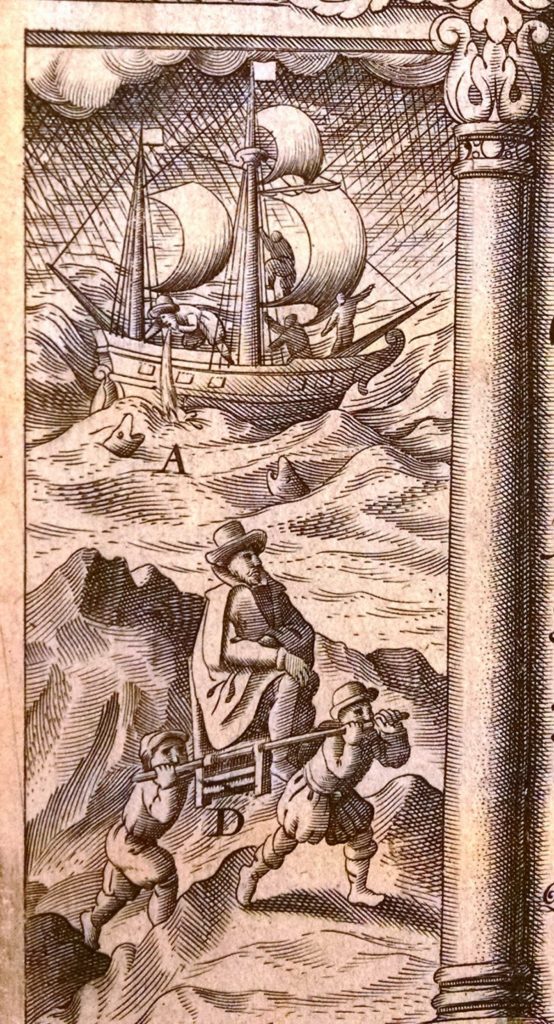









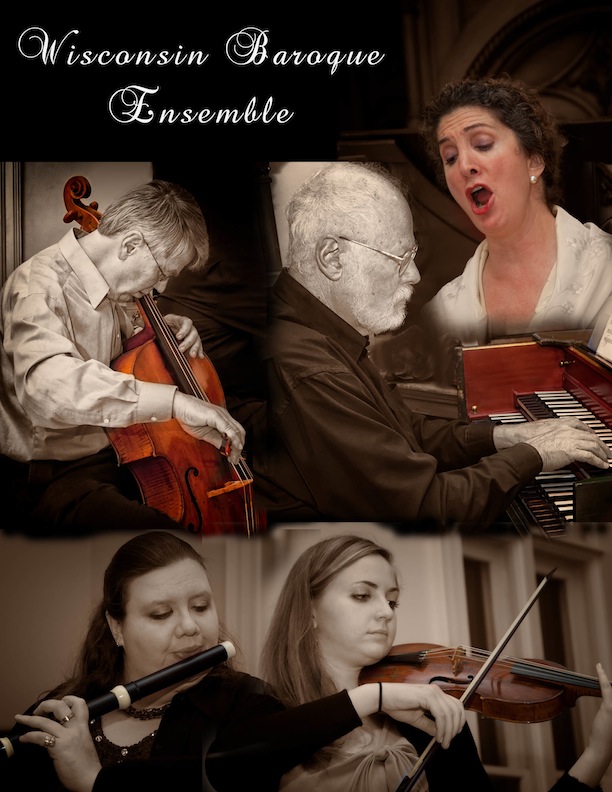


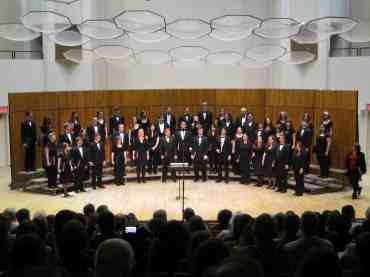
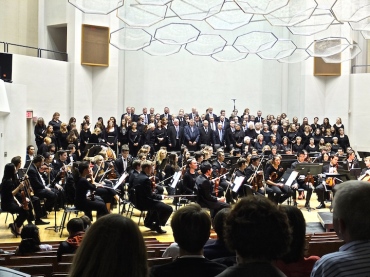
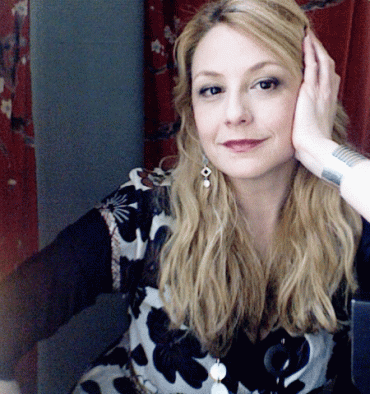
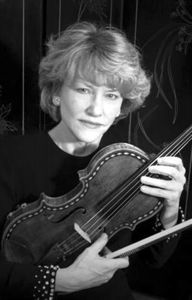
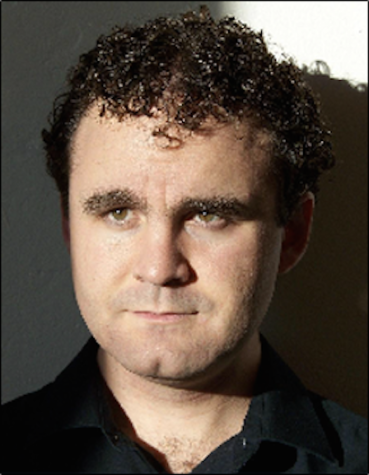
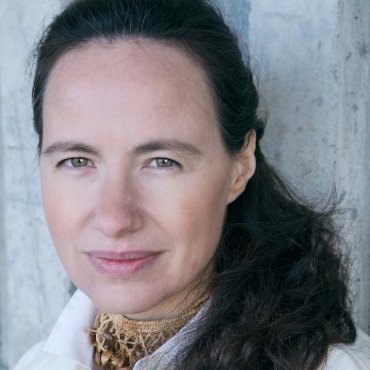
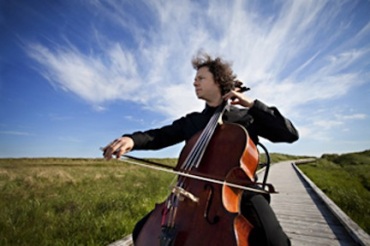
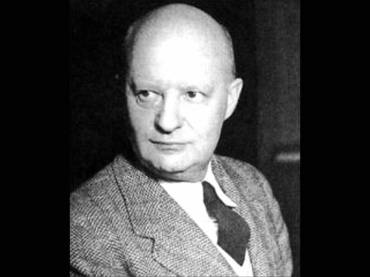
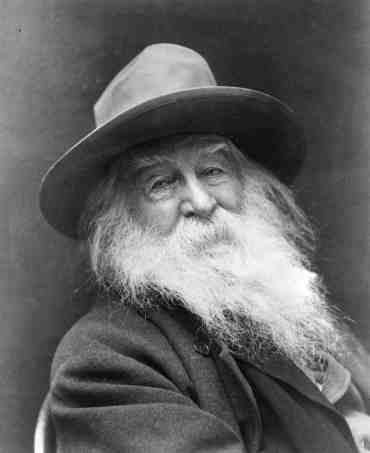
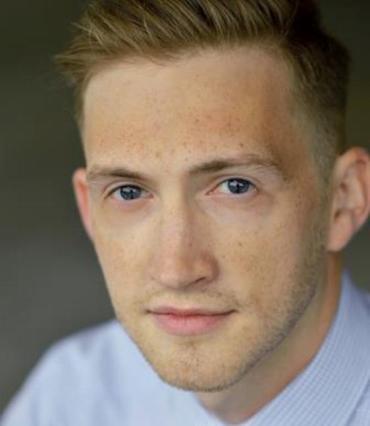
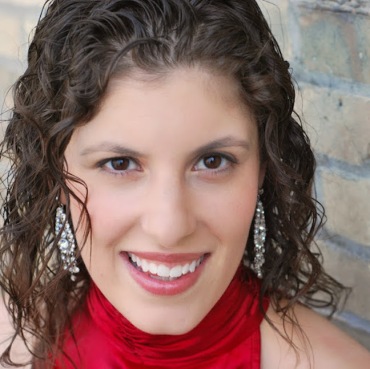


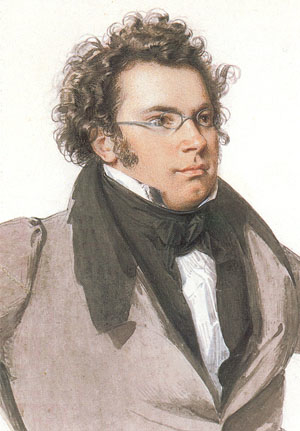








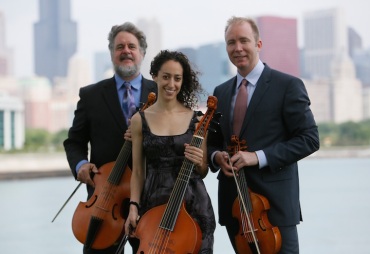




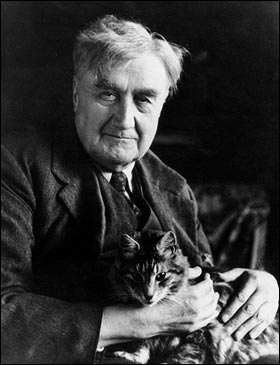





Classical music: The prize-winning critic Alex Ross grieves to Brahms. What composer and piece would you choose to mourn the tragedies of the past week?
6 Comments
PLEASE HELP THE EAR. IF YOU LIKE A CERTAIN BLOG POST, SPREAD THE WORD. FORWARD A LINK TO IT OR, SHARE IT or TAG IT (not just “Like” it) ON FACEBOOK. Performers can use the extra exposure to draw potential audience members to an event. And you might even attract new readers and subscribers to the blog.
By Jacob Stockinger
This past week feels like a week that deserves mass grieving.
Of course, there was the life-changing, historic landmark of surpassing, in only a few months, more than 100,000 deaths from COVID-19 during the coronavirus pandemic in the United States.
There were the spikes in new COVID-19 cases and deaths following the opening up from lockdowns and the mass gatherings over the Memorial Day holiday weekend, such as the party at the Lake of the Ozarks (below) in Missouri.
Then there was the tragic, racist death — an alleged murder — of George Floyd by the police and the ensuing rioting, violence and additional death in Minneapolis as well as the seven shootings among protesters in Louisville.
And depending of your political point of view, there were the incidents of White House threats against social media, especially Twitter, for simply telling the truth or at least directing viewers to it.
So what can one say about these sad events and sad times with music?
Well, not too long ago Alex Ross (below), the prize-winning and internationally respected music critic for The New Yorker magazine, wrote an engaging and moving essay about why he finds Brahms to be the perfect composer for grieving and mourning.
He mentions other composers as possibilities, including Bach, Haydn, Mozart, Beethoven and Schubert.
But Ross still finds Brahms more suited for several reasons. He even cites a favorite performance of a Brahms short, late Intermezzo by the Romanian pianist Radu Lupu. (You can hear that performance in the YouTube video at the bottom.)
Here is a link: https://www.newyorker.com/culture/cultural-comment/grieving-with-brahms
What composers – and what pieces or performances – do you find best for grieving? For marking loss?
Read the essay, listen to the music.
Then let us know in the comment section what music – perhaps Samuel Barber’s Adagio for Strings? – that you would want to listen to during sad occasions.
The Ear wants to hear.
Share this:
Tags: #AdagioforStrings, #AlexRoss, #BlogPost, #BlogPosting, #ChamberMusic, #ClassicalRecording, #COVID-19, #DonaldJ.Trump, #FacebookPost, #FacebookPosting, #FranzJosephHaydn, #FranzSchubert, #HomeWebsite, #JacobStockinger, #JohannesBrahms, #JohannSebastianBach, #LakeoftheOzarks, #LouisvilleKentucky, #LudwigVanBeethoven, #MassGathering, #MemorialDay, #MinneapolisMinnesota, #MusicCritic, #NewYorkCity, #OpeningUp, #PianoMusic, #PoliceOfficers, #PresidentDonaldTrump, #PresidentTrump, #Prize-Winning, #PublicHealth, #RaduLupu, #SamuelBarber, #SocialMedia, #StringMusic, #TheEar, #TheNewYorker, #TheNewYorkerMagazine, #TheU.S., #UnitedStates, #WhiteHouse, #WolfgangAmadeusMozart, #YouTubevideo, Adagio for Strings, Alex Ross, alleged, American, Arts, audience, Bach, Barber, Beethoven, blog, Brahms, Chamber music, Classical music, comment, composer, Concert, coronavirus, critic, death, engaging, essay, event, Facebook, favorite, Franz Joseph Haydn, Franz Schubert, gathering, grief, grieve, grieving, Haydn, historic landmark, History, Holiday, intermezzo, internationally, Jacob Stockinger, Johann Sebastian Bach, Johannes Brahms, lake, Lake of the Ozarks, landmark, late, life-changing, like, link, listen, lockdown, loss, Louisville, Ludwig van Beethoven, magazine, mass, mass gathering, Memorial Day, Minneapolis, mourning, moving, Mozart, murder, Music, music critic, New York City, New Yorker, occasion, opening up, Orchestra, Ozark, pandemic, party, past, performance, performer, Pianist, Piano, piano music, police, post, posting, President, protester, Public health, racist, Radu Lupu, reason, recording, respect, riot, sad, sadness, Samuel Barber, Schubert, share, shooting, shootings, simple, simply, social media, spike, string, strings, surpass, tag, tell, The Ear, The White House, threat, tragedy, Tragic, Trump, truth, Twitter, U.S., United States, violence, Website, week, weekend, White House, Wolfgang Amadeus Mozart, YouTube